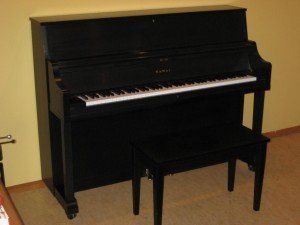How often to tune your piano?
Each of the 230 or so strings has an average of 165 lbs. of tension, for a total of over 20 tons of tension in the piano overall. This extremely large force is always readjusting (balancing) itself and causes a certain amount of pitch variations.
The basic structure of the piano is wood, which is subject to change due to temperature and/or humidity fluctuations. These fluctuations happen whether or not the piano is regularly played.
And the main support of all this tension is the cast iron plate called the Harp. It also fluctuates with temperature, causing changes in pitch unevenly across the range of strings.
The metal strings, under this extreme tension have a tendency to gradually lose a small amount of tension from being struck by the hammer and from stretching. Some of this “out-of-tuneness” caused by use is in direct proportion to the amount of use it receives, and the force with which this use is applied. Piano strings, made of pulled steel, can also have a harmonic “memory”, in that they have points of flexibility where vibration waves (nodes) occur. Keeping these wave nodes in correct tune helps the harmonics sound smooth and pleasant.
Periodic tuning of the piano corrects these changes in pitch that occur gradually over time. In addition, tuning is important as an overall guide to the health of the piano through regular inspections for potential problems (like bugs or mice), and make minor adjustments to the thousands of moving parts involved. Here is a basic Technician’s Tuning Formula.
The average tuning appointment takes an hour to an hour and a half. I usually schedule 2 hours for a piano I haven’t seen before in case of unexpected issues.

